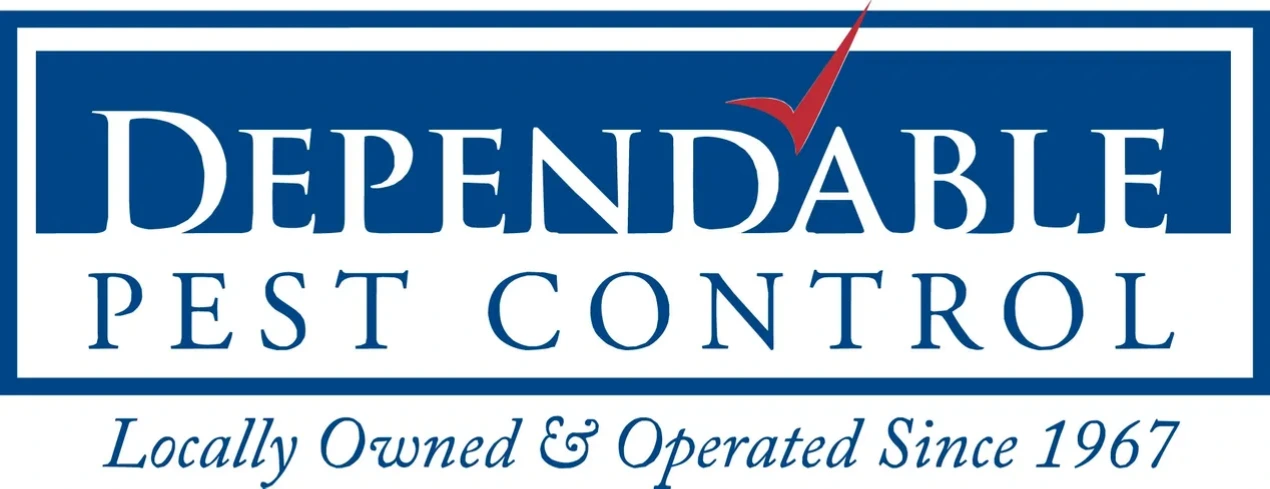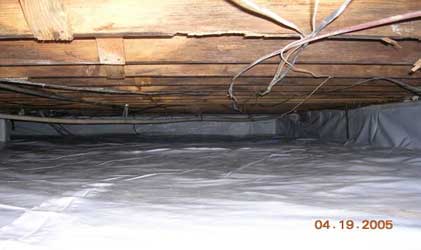Moisture Control
The Problem
There are three things that destroy materials in general, and wood in particular: water, heat, and ultraviolet radiation. Of these, water is by far the most important.
Before
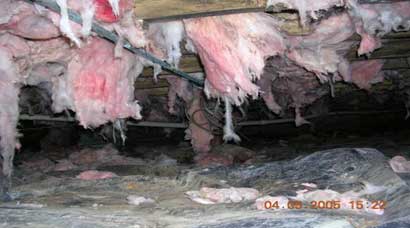
A dirt crawl space under a home is a very bad idea. The earth has very high humidity in the soil. This water vapor moves easily into the crawl space and upwards into the house environment. A damp environment is very unhealthy and destructive. Mold thrives and reproduces by producing airborne spores by the millions, and some molds are toxic. Insects and critters of all kinds love damp environments and wet materials. Rot and decay occur in damp environments causing structural damage.
The natural airflow in a house is from bottom to top. This sucks the moist air and everything in it up into the living areas of the home. Mold spores, odors, humidity, and critters create a very unhealthy environment for people. Many people are allergic to these things, and experience a host of symptoms, and don't realize that their dirt crawl space is affecting their health.
Dirt crawl spaces do not have to be wet or flooded to be extremely unhealthy. Heating and cooling costs are higher in a home with a vented dirt crawl space. As heat rises, the natural air movement in a home is upward. Air escapes out of the upper levels and is drawn upward from the lower levels.
The Liner
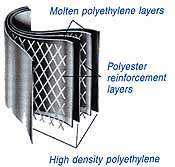

The liner is used to isolate the home from the earth completely and permanently. The liners which are used range in thickness from 20mm down to 9mm. Thick material similar to a pool liner. It is manufactured in a blend of high-density polyethylene, low-density polyethylene, and two layers of polyester cord reinforcement.
It is blue on one side and white on the other. The bright white finished side really brightens a crawl space with the available lighting and allows you to easily see that your crawl space is free of mold, insects, and dirt.
The liner is tough enough for you to crawl on it and use your crawl space for storage. Servicemen can crawl on it without the worry of putting holes or tears in the liner. The liner completely stops moisture penetration. The liner is treated with an antimicrobial finish that effectively protects against mold and mildew growth on the liner.
Drainage Options
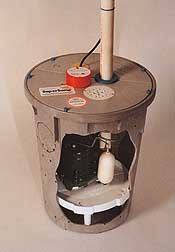
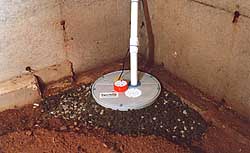
Some crawl spaces are wet and require a drainage system underneath the encapsulation liner. A dependable pest control representative can recommend a drainage system that is best for your crawl space conditions.
A Sump Pump will be necessary for wet crawl spaces to drain the water and pump it out. The Sump Pump has a reliable 1/3 hp cast iron pump in a strong durable sump liner with holes in it to accept water from the ground. It features an airtight lid to keep the moisture and bugs out, and a WaterWatch alarm system to let you know if there is ever a pump or power problem before the crawl space floods.
The Sump Pump will be installed in a low spot in your crawl space. As an option, a drainage swale or trench system can be developed around the perimeter to drain water to the Sump Pump.
